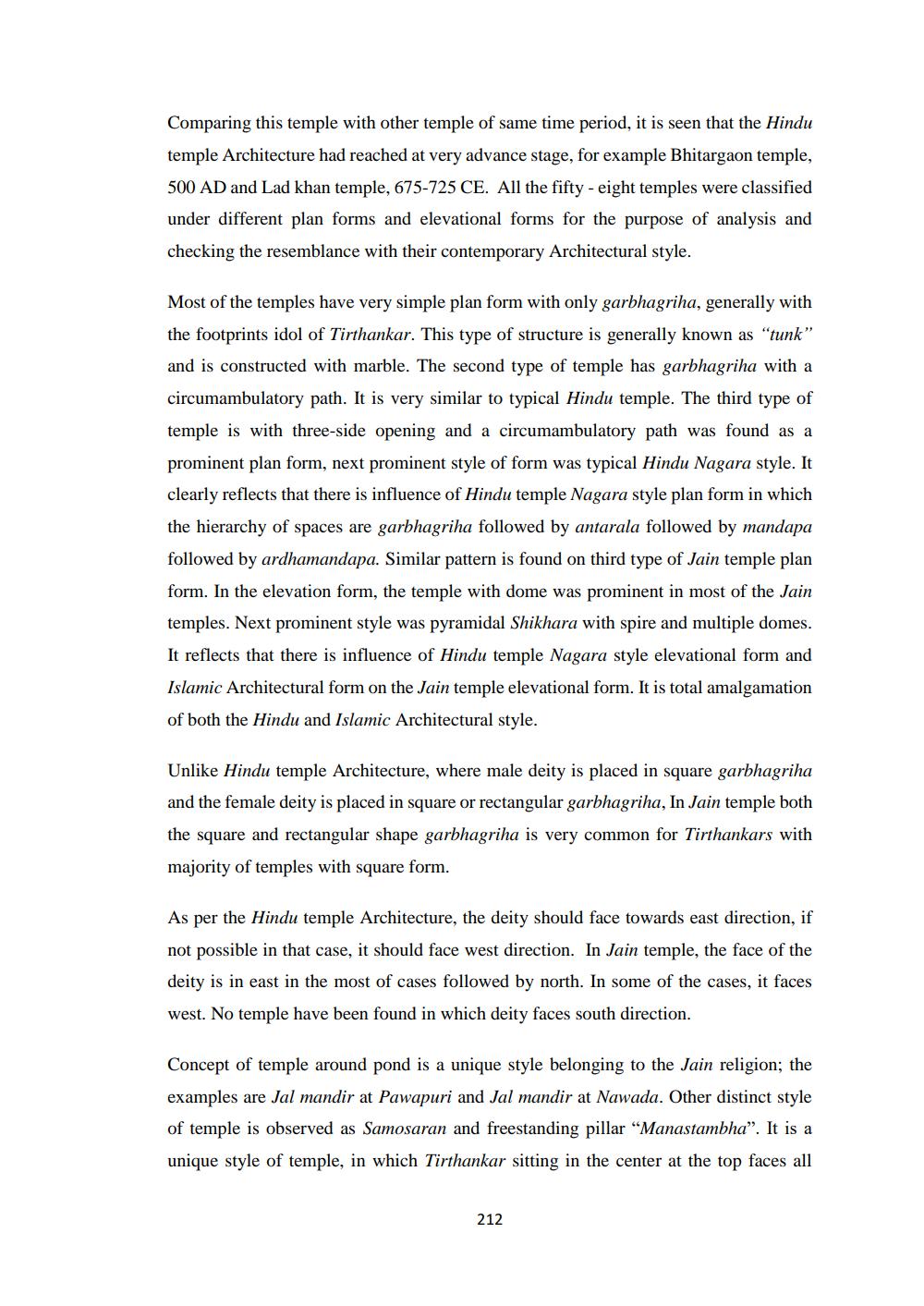________________
Comparing this temple with other temple of same time period, it is seen that the Hindu temple Architecture had reached at very advance stage, for example Bhitargaon temple, 500 AD and Lad khan temple, 675-725 CE. All the fifty-eight temples were classified under different plan forms and elevational forms for the purpose of analysis and checking the resemblance with their contemporary Architectural style.
Most of the temples have very simple plan form with only garbhagriha, generally with the footprints idol of Tirthankar. This type of structure is generally known as "tunk" and is constructed with marble. The second type of temple has garbhagriha with a circumambulatory path. It is very similar to typical Hindu temple. The third type of temple is with three-side opening and a circumambulatory path was found as a prominent plan form, next prominent style of form was typical Hindu Nagara style. It clearly reflects that there is influence of Hindu temple Nagara style plan form in which the hierarchy of spaces are garbhagriha followed by antarala followed by mandapa followed by ardhamandapa. Similar pattern is found on third type of Jain temple plan form. In the elevation form, the temple with dome was prominent in most of the Jain temples. Next prominent style was pyramidal Shikhara with spire and multiple domes. It reflects that there is influence of Hindu temple Nagara style elevational form and Islamic Architectural form on the Jain temple elevational form. It is total amalgamation of both the Hindu and Islamic Architectural style.
Unlike Hindu temple Architecture, where male deity is placed in square garbhagriha and the female deity is placed in square or rectangular garbhagriha, In Jain temple both the square and rectangular shape garbhagriha is very common for Tirthankars with majority of temples with square form.
As per the Hindu temple Architecture, the deity should face towards east direction, if not possible in that case, it should face west direction. In Jain temple, the face of the deity is in east in the most of cases followed by north. In some of the cases, it faces west. No temple have been found in which deity faces south direction.
Concept of temple around pond is a unique style belonging to the Jain religion; the examples are Jal mandir at Pawapuri and Jal mandir at Nawada. Other distinct style of temple is observed as Samosaran and freestanding pillar “Manastambha”. It is a unique style of temple, in which Tirthankar sitting in the center at the top faces all
212




